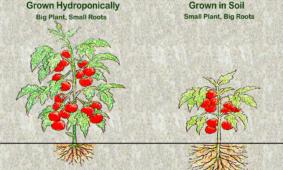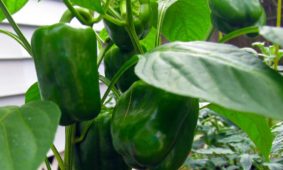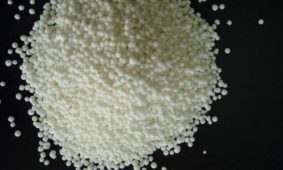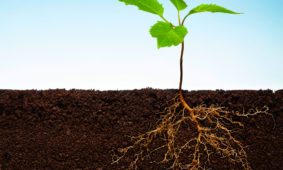Soil versus Hydroponics
Growing in Soil Growing Hydroponically Soil microorganisms are necessary to break down soil particles into the basic elements of nitrogen, phosphorus, potassium and trace elements.. Balanced nutrient formula is dissolved directly into water so plants receive perfect nutrition at all times. There is a lower concentration of nutrients in soil so roots must grow longer […]
READ ARTICLEThe Foundation of Hydroponics
Category 1: Class of Hydroponics Agroponics Aeroponics Aquaponics Category 2: Nutrient Derivations Hydroponic Bioponic Aquaculture Category 3: Types of Hydroponic Systems: Open/Closed High Density Vertical (HDV) Vertical Nutrient Film Technique (NFT) Deep Water Culture (DWC) Ebb and Flow Drip There is some controversy over the way to classify hydroponic systems. The purpose of this article […]
READ ARTICLEAn overview of Hydroponics
Definition of Hydroponics Hydroponics is actually the science of growing plants without soil. Rather than soil, plants are grown in solutions containing each of the necessary minerals and elements. Methods utilized to get the nutrients to the roots, combined with the needed oxygen, include bare-root systems and systems using inert substrates to support the growth […]
READ ARTICLEWhy Use Hydroponics
The ability to produce higher yields than traditional, soil-based agriculture Allowing food to be grown and consumed in areas of the world that cannot support crops in the soil Eliminating the need for massive pesticide use (considering most pests live in the soil), effectively making our air, water, soil, and food cleaner Pesticide free products […]
READ ARTICLEImproving Flavor In Your Garden – Treat ‘Em Bad And They’ll Taste Better
Dr. Morgan shares some secrets for amping up the flavors in your hydroponic crops. When it comes to good food, we are all looking for taste, aroma and texture. Sometimes these all come together to create a sensory delight, but when it comes to fruit, vegetables and herbs, appearances can certainly be deceiving. Those huge, […]
READ ARTICLEWhole Foods Store Millburn, New Jersey
BrightFarm Systems was commissioned to design and install a demonstration scale, sustainable urban greenhouse for a new Whole Foods Market store in Millburn, New Jersey. Sustainable Agriculture and Wise Environmental Practices are two core values of Whole Foods Market. They are also significant supporters of local farmers in the Northeast region and beyond. The demonstration […]
READ ARTICLEHydroponics First Recorded Scientific Experiments
Some three centuries ago, john Woodward, an English scientist and a fellow of the Royal Society, undertook the first recorded scientific experiments on the subject of plant nutrition. He wanted to know whether plants drew nourishment from the soil or from water. Woodward discovered that adding small amounts of soil to the water in which […]
READ ARTICLECalcium in Plants
Calcium uptake and mobility Calcium uptake by the plant is passive and does not require energy input. Calcium mobility in the plant takes places mainly in the xylem, together with water. Therefore calcium uptake is directly related to the plant transpiration rate. Conditions of high humidity, cold and a low transpiration rates may result in […]
READ ARTICLETypes of Hydroponic Systems
There are two main types of hydroponic systems – closed hydroponic systems and open hydroponic systems. Hydroponic systems that do not involve growing media are usually closed systems, while hydroponic systems that involve growing media (container plants), may be closed or open systems. Closed Hydroponic Systems Closed hydroponic systems the same nutrient solution is recirculated and the nutrient concentrations are monitored […]
READ ARTICLECalcium Nitrate
Also called Norgessalpeter (Norwegian saltpeter) is the inorganic compound with the formula Ca(NO3)2. This colorless salt absorbs moisture from the air and is commonly found as a tetrahydrate. It is mainly used as a component in fertilizers. Nitrocalcite is the name for a mineral which is a hydrated calcium nitrate that forms as an efflorescence […]
READ ARTICLEWhat’s Hydroponic, What’s Not?
If a plant is grown without soil and with a complete nutrient solution, that’s hydroponics! It can be as simple as plants glowing in sand, gravel or rockwool with a nutrient drip, or as complex as a complete waterculture system, such as NFT or aeroponics. No matter what method you use, the key to successful […]
READ ARTICLEAggregate Hydroponics (Agroponics)
In aggregate hydroponic systems, a solid, inert medium provides support for the plants. As in liquid systems, the nutrient solution is delivered directly to the plant roots. Agroponic systems may be either open or closed, depending on whether surplus amounts of the solution are to be recovered and reused. Open systems do not recycle the […]
READ ARTICLE



















